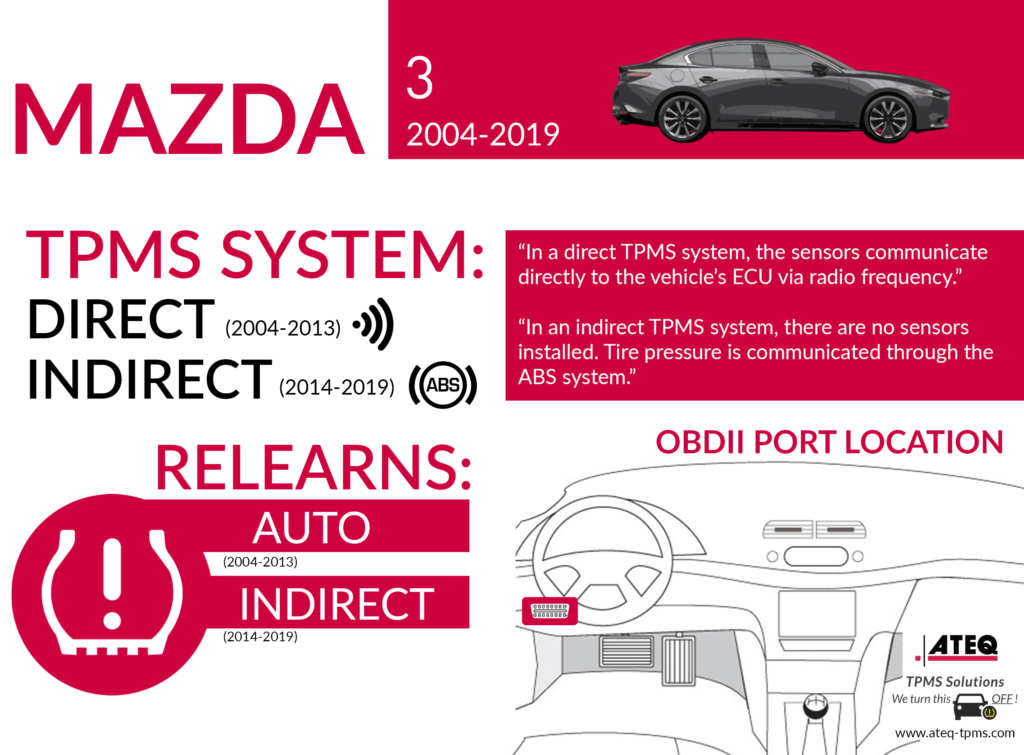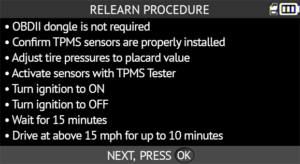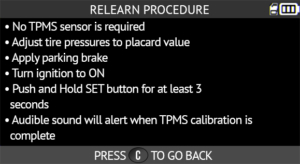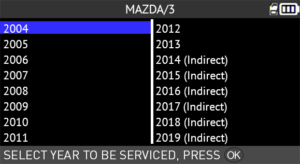Back to the news page
05.28.2019
TPMS diagnostic information – Mazda 3 2004-2019

After the TREAD Act was mandated in 2007, all vehicles manufactured in the United States beginning in 2008, must be installed with direct or indirect TPMS systems.
The Mazda 3 is equipped with indirect and direct TPMS systems, depending on the year. A direct TPMS system has TPMS sensors are installed in the wheel. If one or more tires indicate low tire pressure, the TPMS sensors will transfer the information to the vehicle’s ECU. An indicator light (low-line TPMS system) or each tire pressure will show on the dash (high-line TPMS system). An indirect system does not have sensors in the wheels and uses the ABS system to communicate when tire pressure is low in one or more tires.
According to the TIA relearn chart, for years 2004-2013 when the Mazda 3 was manufactured with a direct TPMS system, a TPMS relearn is recommended only when replacing a TPMS sensor. For years 2014-2019 when the was manufactured with an indirect TPMS system, a TPMS relearn or re-calibration is recommended when changing air pressure, rotating tires, and replacing a TPMS sensor.

All OE, programmable, configurable, hybrid and OE-type (one-to-one) TPMS sensor options and service kits can be found in the VT56, VT46 brands, and VT36 TPMS Tools.


When servicing a Mazda 3, perform “CHECK TPM” before working on the vehicle. Using the VT56 or VT46 brands, the tool will be able to display if the vehicle is manufactured with a direct or indirect system.

If the vehicle is an indirect system, no sensors are in the wheel, and an indirect relearn should be performed when changing air pressure, rotating tires, and replacing a TPMS sensor to turn the TPMS light off.
Mercedes-Benz S-Class TPMS diagnostic information an...
The aftermarket provides technicians with many optio...
The VT56 software version DA1-26-20 now includes new...